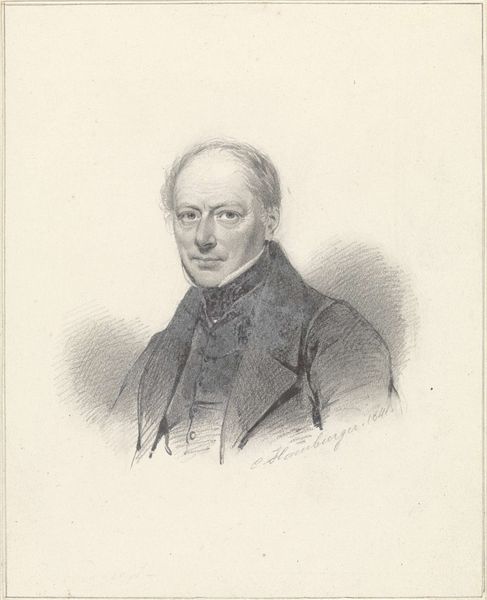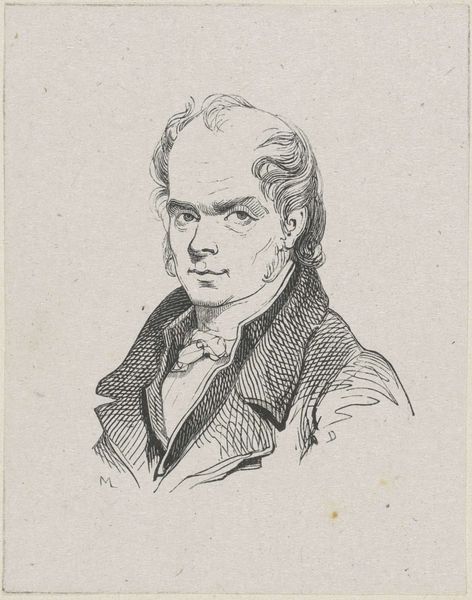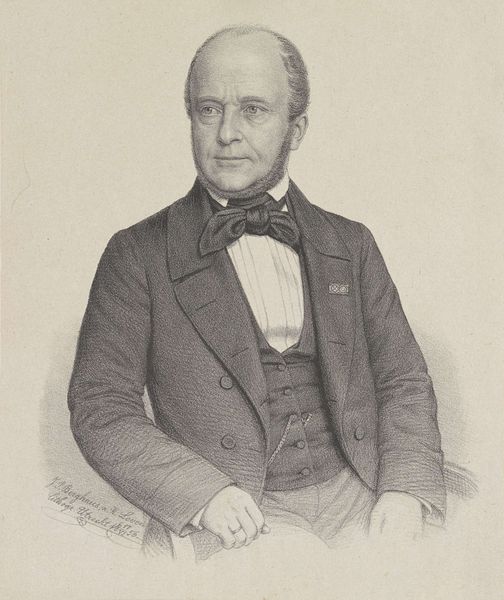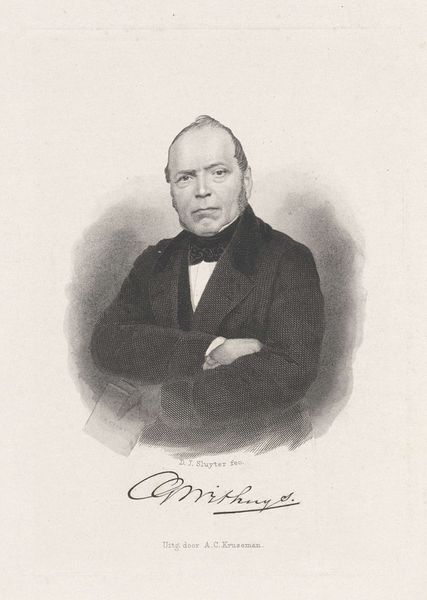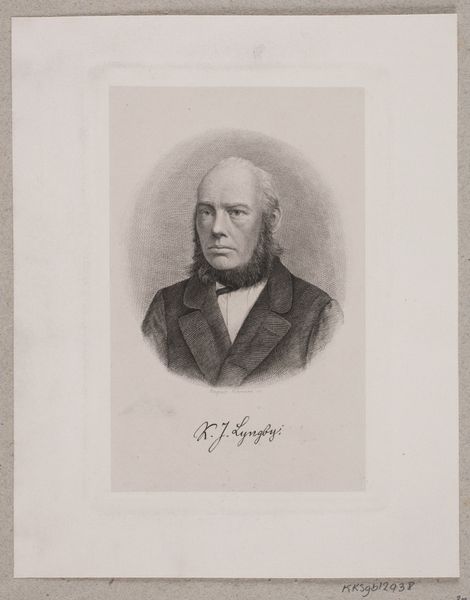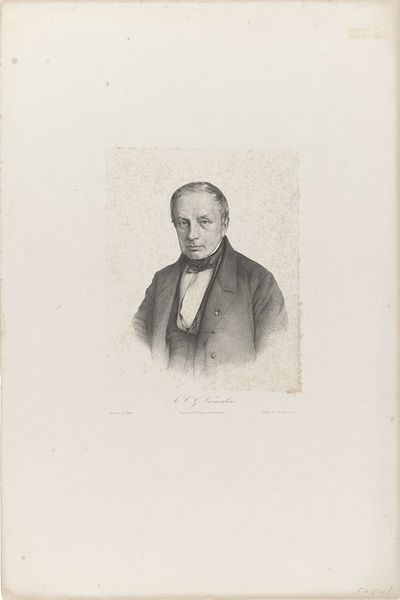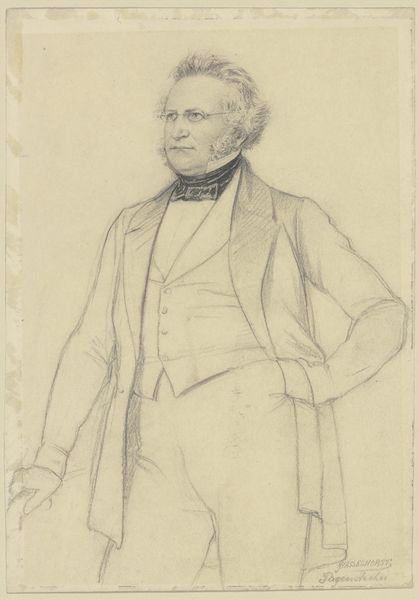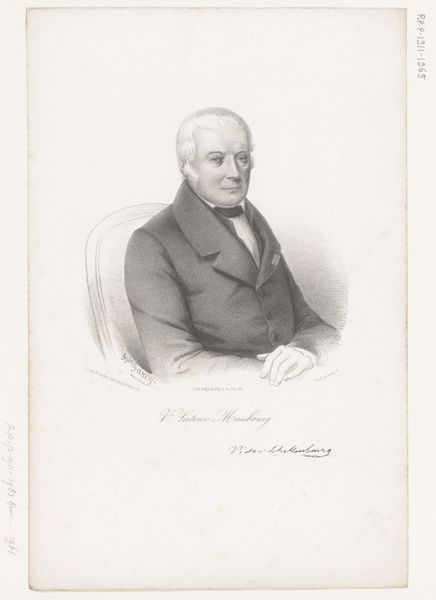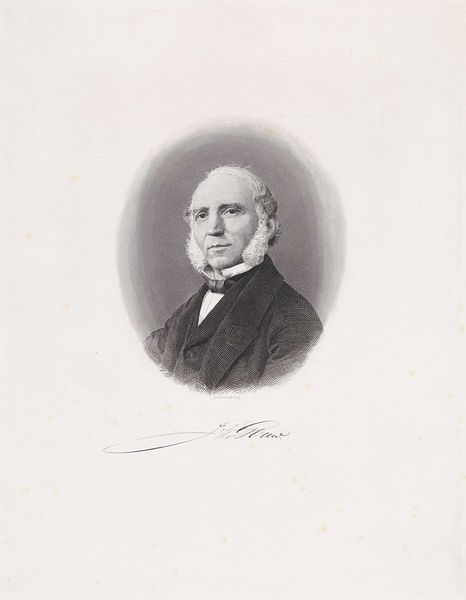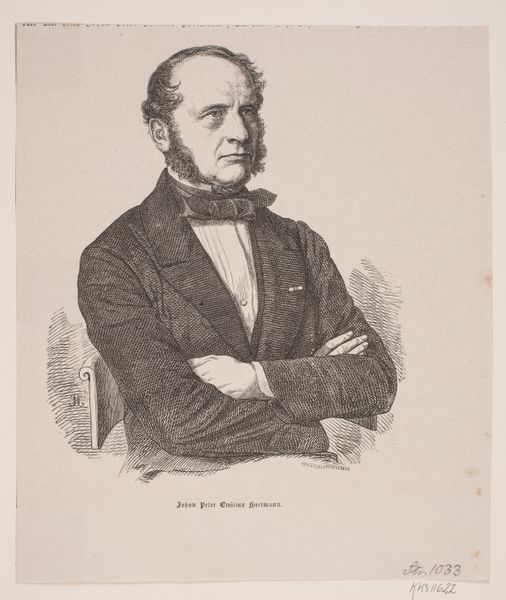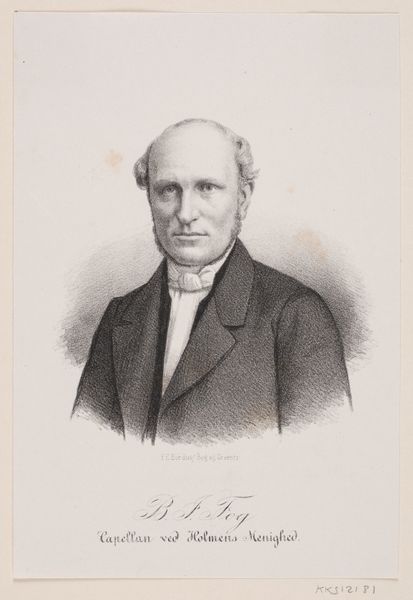
drawing, pencil
#
portrait
#
pencil drawn
#
drawing
#
pencil sketch
#
figuration
#
pencil drawing
#
romanticism
#
pencil
#
portrait drawing
Dimensions: height 208 mm, width 167 mm
Copyright: Rijks Museum: Open Domain
Editor: This is Albertus Brondgeest's "Self-Portrait," created in 1816 using pencil. It's a strikingly direct image; the gaze feels so present. What historical context should we consider when viewing this? Curator: A key aspect is situating this work within the burgeoning culture of portraiture and self-representation in the 19th century. The rise of the middle class fueled a demand for portraiture as a way to assert status and identity. But consider: why a pencil drawing, rather than a painting? Editor: Perhaps it was more accessible and affordable than oil paints? Curator: Exactly. Pencil drawings were often preliminary sketches or studies. However, Brondgeest completed this. What does the choice of medium suggest about his intended audience and the role of art during that time? Was it intended for public display, or for personal reflection, a gift perhaps? Editor: I hadn’t thought about that! If it were a personal work, would that impact the honesty, or perhaps the idealization, of the piece? Curator: Precisely. The "honesty" of a self-portrait becomes a very loaded term! Were societal expectations shifting around acceptable artistic practices? Also consider the rise of Romanticism, which influenced portraiture. Do you see that here? Editor: Definitely, in the intimate and less formal style, despite the traditional dress. It feels more about capturing a feeling than just likeness. Curator: And how does this shift in emphasis play out within a public setting like the Rijksmuseum, shifting its role from an individual memento to a public treasure? Editor: It makes you wonder about all the layers of meaning and reception history, especially as we, as modern viewers, interact with it today. Thanks, that gives me so much to consider! Curator: Indeed! It demonstrates the complex interplay between the personal, the political, and the evolving role of art within society.
Comments
No comments
Be the first to comment and join the conversation on the ultimate creative platform.
